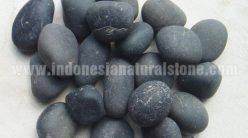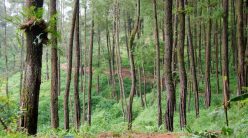nhm.org
During the breeding season, a bird’s nest provides an environment for its eggs to develop. Some birds don’t build a nest, but instead lay their eggs directly on the ground, in a hole, or even on a bare branch. In other species, nests are elaborate works of avian architecture.
Nest size, shape, and building materials vary greatly among birds. Nest placement and design, along with the behavior of the parents and young, combine to provide protection from temperature extremes and from predators. Birds instinctively know how to build the type of nest characteristic of its species.
Woodpeckers excavate their nests in tree trunks or branches. These nest cavities offer safety from predators and a comfortable micro climate for the eggs and young.
Many female hornbills build their nests in tree cavities and are then sealed in by their mates. Their mates feed them through a small hole, while they incubate the eggs and care for the chicks. These “fortresses” protect them from predators, such as snakes.
Many tropical birds construct hanging nests, which help keep the occupants out of predator’s reach and protect them from heavy rainfall. Some nests have a fake entrance that dead-ends to trick predatory snakes.
The most frequent type of nest among North American songbirds, such as the robins, is a simple cup usually lined with fine grass or other soft material.
Many colonial seabirds, such as Elegant Terns, make no nest, but simply lay their eggs in a shallow scrape in the sand or rocky ground. The eggs are not camouflaged. Predators are scarce and the eggs get a measure of protection from “safety in numbers” within the large colonies.
MANY WAYS TO BUILD A NEST
Tailorbirds of Southeast Asia sew leaves together to build a funnel-shaped nest. Using their sharp bills like needles, these tiny birds pierce holes along the edges of large green leaves. They thread plant fibers through the holes and knot them so the stitches won’t fall apart.
The Edible-nest Swiftlet of Southeast Asia makes its nest entirely out of hardened saliva. The saliva looks like spaghetti when fresh, but hardens when exposed to the air. These translucent nests are the main ingredient of the Chinese delicacy- bird’s nest soup. To gather the nests for bird’s nest soup, collectors climb hundreds of feet up ladders. Thousands of nests (about 20 to 30 tons) are exported from Borneo each year.
The Nuiafo’ou Megapode lives only on one tiny volcanic island in the South Pacific. The female buries her eggs in the volcanic ash near the rim of the crater, relying on the heat from the volcano to incubate them.
Some birds, such as Eurasian Cuckoos, lay their eggs in the nests of other birds. Cuckoos lay eggs that mimic those of the host species in color. After hatching, the young cuckoo shoves the other eggs and young out of the nest. The foster parents devote all their energy to raising the young cuckoo that grows larger than themselves.





